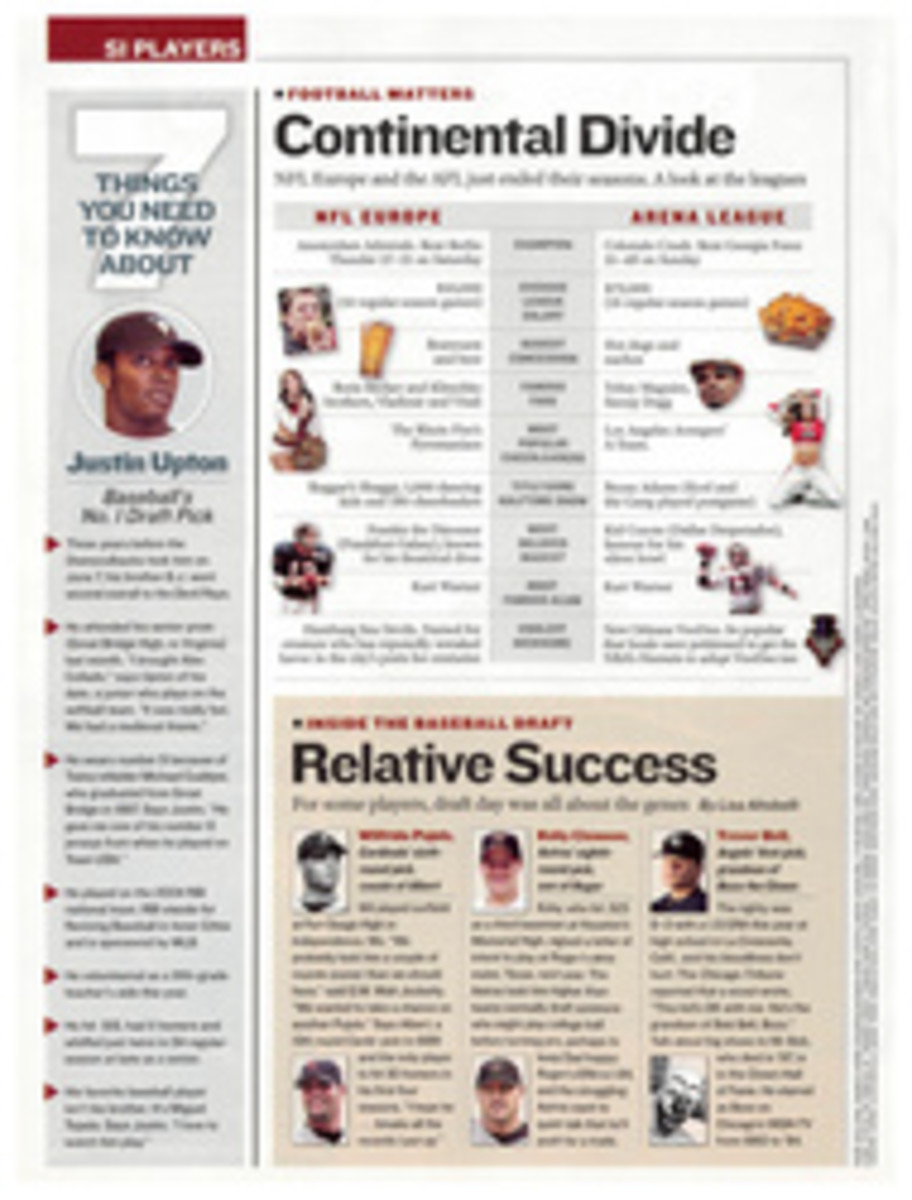
Player of the Century
WILT, 1962:
THE NIGHT OF 100 POINTS AND THE DAWN OF A NEW ERA
By Gary Pomerantz
Crown, 288 pages, $24.95
The numbers that swirl around Wilt Chamberlain are so prodigious--a 50.4 scoring average over one season! Fifty-five rebounds in one game! Twenty thousand women in his bed!--that the Dipper (Chamberlain's favorite nickname for himself) seems more statistical curiosity than human being. Still, Gary Pomerantz's decision to get at the man and his times through the prism of his 100-point night against the New York Knicks on March 2, 1962, was a wise one. The author's premise that the modern game was ushered in on that night is shaky, but the journey on which Pomerantz takes us, through Wilt's oversized career, through the off-the-radar NBA of the early '60s and through the outpost of Hershey, Pa., the unlikely site of that triple-digit explosion, is entertaining and informative.
The very fact that Chamberlain accomplished the unthinkable (the next highest single-game point total, which belongs, of course, to Wilt, is 78) in a town known for chocolates and Ferris wheels says everything about the NBA circa 1962. In owner Eddie Gottlieb's eternal search for a buck, Chamberlain's Philadelphia Warriors frequently played regular-season games out of town. That the 100-point game took place in a minor league venue against an inferior team is equally a metaphor for Wilt's career. Though he was the most dominant one-man force any sport has ever known, Chamberlain always comes up wanting when compared with serial champion Bill Russell. A couple of months before the fateful night in Hershey, Pomerantz writes, the public address announcer at Boston Garden informed the crowd, with requisite facetiousness, that Chamberlain had broken the arena record for shot attempts in a quarter.
The joy of Wilt, 1962 is in the background details. Pomerantz exposes the casual and dismissive racism directed toward pro basketball in general and Chamberlain in particular. He writes about the ambivalence of some white teammates toward the supersized Chamberlain. Pomerantz also reveals the likelihood that the Hershey Arena rims were loose, and thus more forgiving on that evening, because when the circus was in town, kids often would sneak into the arena and borrow springboards used by clowns to bounce up and hang from the rims. He recounts in detail the ownership and provenance battle over the 100-point basketball. And he provides the jaw-dropping math that defines Chamberlain as a singular phenomenon: Wilt scored 67, 65 and 61 points in the three games that led up to Hershey; he scored more points himself in that '61--62 season than the entire Philadelphia team had scored during '47--48; he reached 4,000 points for a season before any other player had reached 3,000.
Contested as it was in a small Pennsylvania town at a time when news about the NBA traveled slowly (if at all), the 100-point night had an air of unreality about it. Did the overmanned Knicks (who lost 169--147) roll over to allow Wilt his triple digits? Was the performance anything more than a sideshow? What did it demonstrate about Chamberlain as a player? Ultimately, what did a meaningless late-season game in Hershey really matter in the context of the rise of the NBA?
Pomerantz answers all of those questions, with the exception of that last one, which was the one he sought to resolve. Even so, by the conclusion of the book the reader feels as if he had been among the 4,000 or so lucky souls in the arena on a seemingly unforgettable night that had somehow been forgotten.
COLOR PHOTO
CROWN PUBLISHERS
B/W PHOTO
PAUL VATHIS/AP
BEHIND THE NUMBERS
Many questions about Wilt's big night in Hershey are answered.

